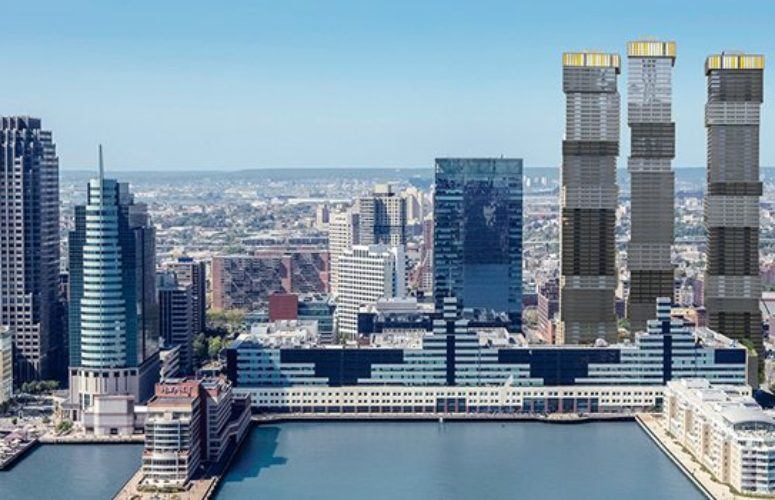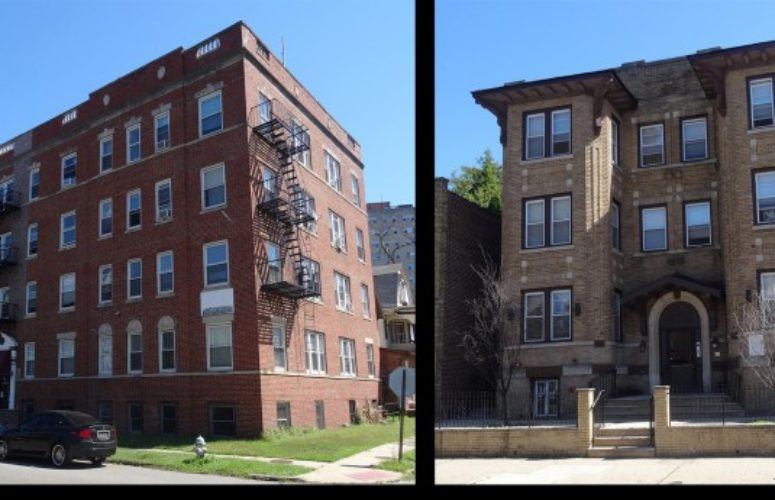
Millennials are Driving Changes in Real Estate
“Live, work, play” environments appeal to many in this demographic group.
By Vince Baglivo, Contributing Writer On May 9, 2016When it comes to finding a desirable place to live or work, real estate professionals have long emphasized the importance of location. But defining what constitutes a great location can vary considerably, depending on the age of the person asked, their interests and needs.
In 2015, Millennials (born between the early 1980s and the early 2000s) surpassed Baby Boomers as the largest generational cohort in the United States, according to census data. Combined with the growing number of Baby Boomers contemplating empty nest status or approaching retirement, that’s a sizable number of potential renters and buyers. Members of New Jersey’s real estate development community are rethinking their strategies and adjusting to the changing demands of today’s consumers and workforce.
In its February 2016 report, “The Unintended Consequences of Housing Finance,” the Regional Plan Association noted that 56 percent of Millennials and 46 percent of Baby Boomers prefer to live in more walkable, mixed-use neighborhoods. And, while there is a growing shortage of multi-family housing, the nation’s current supply of single-family homes is estimated to exceed future demand for at least the next 25 years.
Mack-Cali Realty Corporation announced a new strategy last year to repurpose select office buildings in its portfolio to multi-family use. By 2018, the company, currently moving its headquarters from Edison to Jersey City, expects the number of residential units in its portfolio to more than double to 14,843 total residential units operating or in construction. The move reflects a focus on waterfront properties along the Hudson County “Gold Coast,” including Jersey City, Hoboken, Weehawken and West New York.
“The younger market wants to be located in transit-based locations, especially on the Hudson waterfront,” notes Andrew Marshall, Mack-Cali’s chief operating officer and executive vice president for development. “Millennials have embraced the concept of “live, work, play” and now expect that the place where they live will be in close proximity to where they work and play. They want to live in a place where they can walk downstairs to the gym, walk to work or to public transportation, and then head to a nearby bar or restaurant when the work day is done. It’s about convenience.”
Mack-Cali is currently constructing the URL Harborside, a 69-story, 763-unit mixed-use project on the Jersey City waterfront geared towards Millennials. The property is designed with more efficient unit sizes, contemporary finishes, and a variety of amenities to enhance social living preferences. Leasing will also begin in 2016 for the nearby M2 at Marbella, a luxury residential building offering high-end amenities that the competitive rental marketplace demands. Mack-Cali will also continue to refocus the Harborside development with new retailers, restaurants and communal activity and workspace centers.
Market demand, plus tax abatements supported by Mayor Steven Fulop to further redevelopment efforts, combined with Jersey City’s key location and connectivity to New York City, has also helped spur significant projects downtown and around Journal Square.
The Kushner Companies acquired the One Journal Square property in 2015, jump-starting a stalled residential project, and announced plans for a 40-story residential tower at 30 Journal Square. Kushner also joined forces with KABR Group to break ground on the Trump Bay Street, a 50-story luxury tower. Work continues on Journal Squared, a mixed-use project featuring a 54-story tower with 538 apartments and a direct connection to the adjacent PATH Station from KRE Group and its partner, National Realty Advisors.
Gene Diaz, principal partner, Prism Capital Partners, a privately held, regionally focused real estate investment and development company, said that a notable change in land-planning thinking – in which balanced downtowns are key – is being driven by the convenience lifestyle philosophy of the Millennial generation. “Since not all Millennials can afford the high cost of living in a marquis city, developers have been focusing on redevelopment in areas proximate to public transit and walkable downtowns that are closest to strong employment corridors,” Diaz continues. “In turn, the most successful suburban municipalities see the resulting opportunity and are working to mix things up in order to achieve this traditionally urban balance.”
Diaz points to Woodbridge, where Prism Capital Partners recently signed a definitive agreement to purchase a five-acre parcel at the corner of Rahway Avenue and Green Street, directly across from NJ Transit’s Woodbridge Station. Designated for redevelopment with residential zoning, the plan includes a 240-unit, multi-family rental community on the site, preserving the retail amenities, and providing the type of luxury, fully amenitized property adjacent to public transit in a walkable downtown for which demand is so strong.
While Millennial trends and preferences, including urban transit village orientation, renting versus owning, and marrying and having children later in life, might suggest a potential crisis for the single-family home market in New Jersey’s suburban communities, the issue is not that simple. Concerns have been raised over the ability of transitioning urban communities that are booming today to support Millennials into maturity.
“I don’t believe home ownership is any less a desire in my generation than it has been for the Baby Boomers,” notes William Kimmerle, an architect and designer with the Kimmerle Group in Morristown. “There is no straightforward paradigm that can describe what Millennials are seeking, yet development is providing offerings for the full spectrum of demand.”
Tom Genova of Genova Built, LLC has seen both sides of the issue. For over 25 years, his company has overseen the construction of upscale custom homes and commercial and redevelopment projects in Somerset County. The Genova Companies also own investment properties in Somerville, including retail and office space and apartments. While Genova continues to build single-family homes, albeit on a smaller scale, his focus, and that of other developers, is on the revitalized downtown in the Somerset County seat.
Mayor Brian Gallagher calls it “a defining moment for Somerville” when NJ Transit agreed to sell 31 acres of land adjacent to the Somerville Train Station for $10 million in February. Conceptual plans for a transit village on the site, a former landfill, feature 650 to 750 residential unit, including both townhouses and apartments, retail and live-work spaces and a parking garage to be constructed, operated and managed by Lakewood-based Somerset Development.
The project is one of several in various stages of planning and construction. Each capitalizes on downtown Somerville’s combination of transit connectivity and walkability between the train station and downtown stores, restaurants and services. Other nearby projects featuring a mix of studio, one bedroom and some two-bedroom spaces include the four-story Cobalt Apartments on Veterans Memorial Parkway, a 72-unit apartment building on Davenport Street, 200 residential units on a vacant Kirby Avenue warehouse and a 174-unit townhouse-apartment complex on a former factory site on Haynes Street.
Greg Storm of DGM Management, LLC has apartment projects under construction on Veterans Memorial Parkway near the Cobalt and on North Doughty Avenue that are expected to be completed later this year, in addition to other commercial and rental units managed by DGM around Somerville.
Storm believes Millennials priced out of Manhattan, Brooklyn, Hoboken and Jersey City are contributing to demand, and are looking for a bigger bang for their buck in Somerville rentals.
“Millennials will trade square footage in their apartments, particularly if there is a good balance of living and working space like a den or office, but expect higher-end amenities,” Storm points out.
Like many other successful towns statewide, Tom Genova believes part of Somerville’s growing attraction to Millennials is the downtown’s dynamic streetscape. As chair of the Downtown Somerville Alliance (DSA), a public/private partnership between the borough of Somerville and local business and property owners, he and other like-minded volunteers, supported by the DSA’s professional staff, have helped create a year-round program of activities, events and entertainment to complement Somerville’s renowned restaurants. The creation of the Division Street Plaza, a pedestrian-only public space off Main Street, has engaged downtown residents and visitors alike. An explosion of new stores, boutiques and services has followed, adding to the mix.
Millennials are having a similar impact on New Jersey’s commercial space. Visions of communal work areas associated with tech giants like Apple and Google have become part of the new normal. Expectations of exciting dining, entertainment, health and fitness amenities are influencing the design and management of new projects and the reinvention of existing properties.
Mack-Cali is increasing amenities like fitness centers, shared social spaces, increased food options and collaborative work spaces in its Jersey City office buildings and in more suburban locations like Parsippany.
The Kimmerle Group is providing corporations and landlords with spaces that cater to Millennial work styles. “If a landlord provides soft-seating and high-top lounge/work spaces in public areas, some of the pressure is taken off the tenant-corporation to build the same internally,” William Kimmerle notes. “The same is true for cafes and conferencing. It is a basic assumption today that somewhere in a corporate construction, there will be ‘alternative’ work spaces.”
Cushman & Wakefield Vice Chairman Robert Rudin, who oversees the commercial real estate services firm’s New Jersey consulting practice, believes that for New Jersey to regain its health as a suburban office market, suburban municipalities will need to employ the same type of long-term planning and vision to approximate the environments created in cities like Jersey City, Morristown and New Brunswick. “New Jersey’s most compelling examples of successful development are in areas that have lent themselves to intelligent master planning with sidewalks, bike paths, high density housing, connectivity with shopping, health clubs and restaurants that lead to greater tenant and resident satisfaction,” Rudin states. “When the Millennials have children, the suburbs may prove to be the answer for yet another reluctant generation of minivan-driving 30 somethings – time will tell.”
Mercer Oak Realty LLC and Princeton Property Partners included extensive data about the impact of Millennials in their First Quarter 2016 Princeton Office Market Report, highlighting the need for upgrades to the area’s aging building stock to meet their expectations and preferences. Mercer Oak currently represents over 3 million square feet of existing and proposed Class A office space in the Princeton corridor. The report noted that property owners are realizing they must upgrade their older buildings in order to command the highest rental rates.
“Every day we ask how we can increase the value of properties by improving the quality of life and productivity of tenants,” notes Mercer Oak Chief Executive Officer Aubrey Haines. “Companies can lose employees to competitors with better facilities.”
Haines references recent upgrades by the owners of the Carnegie Center and the Princeton Pike Corporate Center, who have spent millions to retrofit lobbies, construct new cafes and build state-of-the-art fitness facilities.
“It’s good business to keep smart, young employees in the building, content and focused on their work,” Haines concludes. “Millennials are driving business decisions with their workplace requirements, and the demands they convey to their employers actually contribute to a better environment for everyone.”
 Are Millennials Shying Away From Investing in Real Estate?
Are Millennials Shying Away From Investing in Real Estate?
By Mark Seruya
Millennials – now the largest age group in the nation, with an estimated 83.1 million individuals – dictate our economic trends to a large degree. This may well be the case for real estate.
Classified as the group of individuals born between 1982 and 2000, and now representing more than one quarter of the nation’s population, this generation is facing many challenges when it comes to buying a home.
Despite rising rents and low interest rates, many Millennials are delaying the purchase of a home. One reason might be the hefty burden of student loan debt, which impedes the requisite debt-to-income ratios required by lenders for a mortgage. National student loan debt now tops $1 trillion.
Making the burden of student loan payments that much trickier is the flat job market: For 18 to 29 year-olds looking for employment, the unemployment rate topped 13 percent last summer.
Buying a home is the most oft-cited milestone that Millennials with student loan debt will put off. Buying a car was a close second in this age group. Public transportation, alternative modes of transportation such as bicycle, motorcycle or even moped, or repairs to an old car all can make this purchase non-essential for many.
The recent recession, the resulting plunge in home values, in combination with increased competition for higher-paying jobs, may make home ownership at least temporarily lose its appeal.
However, the real estate market has been steadily – albeit leisurely – improving for the past six years. It may seem unbelievable, especially to buyers in hot markets such as San Francisco or New York, but in general, US homes remain affordable. And this relative affordability is convincing some Millennials who’ve either been renting, or perhaps living with family, to buy.
People under the age of 34 accounted for the largest share of homebuyers for the second consecutive year, according to the National Association of Realtors (NAR) 2015 Homebuyer and Seller Generational Study. Millennials accounted for 34 percent of buyers in 2014 and Generation X, followed close behind with 27 percent.
Despite Millennials’ rough start into real estate, there are signs of hope that the next generation of home buyers is ready to capitalize on homeownership.
About the Author: Mark Seruya is managing director and senior portfolio manager with the global wealth management division of Morgan Stanley Wealth Management in Manhattan. He can be reached at 212-903-7699.
Related Articles:



 Are Millennials Shying Away From Investing in Real Estate?
Are Millennials Shying Away From Investing in Real Estate?


